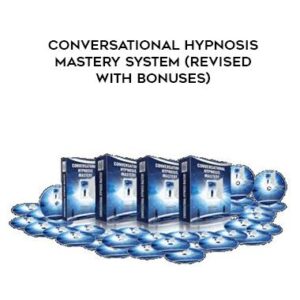In this life-enhancing course with Giten, you’ll discover:
- How trauma impacts the nervous system
- The 6 elements of BioDynamic Breathwork — breath, movement, sound, touch, emotions, and meditation
- The 7 belts of tension — ocular, oral, cervical, thoracic, diaphragmatic, abdominal, and pelvic — and how they’re different from the chakras
- The 3 different speeds of breathing — and how the speed and pattern of your breath activate your sympathetic or parasympathetic nervous system response
- Ways to work more deeply with your felt sense — and understand that if something arises, it’s just a body sensation… and if it’s too much, you can shift yourself to a place of safety
- How, as you address each belt of tension, the belt above or below it also opens and releases
- A deeper awareness of where you’re holding tension — and where your healing focus needs to be
- How your eyes gather visual information, assess safety or threats in your environment, and then send nerve impulses to your occipital area for processing
- How, when you’re breathing effectively and your diaphragm moves freely, it activates your abdominal organs, enhancing digestion, lung and heart movements, overall energy, and long-term wellbeing
- Ways to create and expand what Giten calls a window of tolerance to become more resilient, even in the face of your triggers
- Why a deeper understanding of how trauma works within your body can be incredibly empowering
- Ways to find a place of safety within your own body that you can always return to
What You’ll Discover in These 7 Weeks
In this 7-week transformational intensive, Giten will guide you through the fundamental skills you’ll need to successfully release chronic tension, self-restricting patterns, and emotional pain with Biodynamic Breathwork.
Module 1: Introduction to BioDynamic Breathwork & Trauma Release (August 18)
As your 7-week journey with Giten begins, you’ll become fully grounded in the foundations of BioDynamic Breathwork.
Giten will walk you through the ways trauma turns into tension and how it’s stored in the body as it accumulates over the years.
You’ll explore the profound physical impacts of trauma — and the sensations the body produces when that trauma is released.
Giten will explain how, rather than going into deep, connected breathing practices as in other approaches, you’ll move through BioDynamic Breathwork in intervals using the principle oftitration — releasing tension in small doses so you don’t become overstimulated.
With Giten as your guide, you’ll learn how to become more aware of your body’s sensations — and develop an even more intimate interaction with sensory messages throughout your body — as you take the first steps toward releasing your trauma.
As Giten shares these foundations with you, you’ll discover:
- The 6 elements of BioDynamic Breathwork — breath, movement, sound, touch, emotions, and meditation
- The 7 belts of tension — ocular, oral, cervical, thoracic, diaphragmatic, abdominal, and pelvic — and how they’re different from the chakras
- The 3 different speeds of breathing — and how the speed and pattern of breath activates your sympathetic or parasympathetic nervous system response
- The true meaning of resources — supports, feelings, sensations, areas of the body, memories, people, physical objects, and thoughts — that calm you while enhancing feelings of safety
- How to use your body’s natural rhythm of moving between the contraction of tension and the expansion of relaxation in a process called pendulation
- A 45-minute sitting breathwork exercise to help you become familiar with the practice and bring awareness to parts of your body that need attention
Module 2: Where’s the Next Danger Coming From? — Relieving Tension in the Ocular Belt (August 25)
You’ll explore the ocular belt, which includes your eyes, forehead, and the top of your head.
As you’ll discover, the ocular belt is also home to the emotions of suspicion, amusement, contempt, detachment, guarding, fighting, anger, and grief.
As Giten will explain, the tension in the ocular belt is constantly asking the question, “Where is the next danger coming from?” Your eyes gather visual information, assess safety or threats in your environment, and then send nerve impulses to the occipital area for processing.
In this module, you’ll discover:
- How continual fear and stress create headaches, tightness (in the forehead, cheeks, temples, and more), tension around the ears, tightness in the muscles around the eyeballs and pupils — and even hair loss
- Why extreme cases of fight-or-flight activation — that arise from war environments or unsafe home environments, for example — can cause tunnel vision, when people block out what they’re seeing
- How your ocular belt is affected by frustration — for example, why you might sometimes have difficulty concentrating when you’re stressed and frustrated, despite the high level of energy pouring into your overactive mind
- The powerful changes that come from releasing tension from the ocular belt, including better hearing, sharper vision, and more
- A 45-minute guided practice of breathwork, self-bodywork, and movement focused on releasing tension around your ocular belt — and expanding your peripheral vision
Module 3: How Your Mouth & Voice Work Together — The Oral & Cervical Belts (September 8)
Giten will introduce you to two pivotal belts that often collaborate with each other…
You’ll explore the oral belt, which includes the mouth, chin, nose, jaw, and ears. Emotions like contempt, disgust, longing, desire, fear, pain, anger, connection, self-awareness, and presence reside in this belt.
The cervical belt, meanwhile, is home to the deep neck muscles and tongue. Emotions like self-pity, helplessness, longing, hurt, fear, pain, rage, freedom, creativity, and self-expression are found in the cervical belt.
As Giten will explain, your oral and cervical belts work intimately together. While your oral belt is home to your mouth, your cervical belt houses your tongue, and ultimately, your voice.
You’ll discover how both belts are involved when you hold back the words you really want to say — for instance, you might wake up with a sore throat the morning after repressing your true opinion at work.
Or you might experience chronic tension in your throat and neck, stiffness in
your trachea and vocal cords, and/or a restriction of breath.
Neck tension can also cause you to sink your neck down into your shoulders, physically pulling yourself into your “shell” like a turtle. This type of constriction involves much more than keeping your physical mouth shut — it impacts your creativity and true expression of your inner self.
In this module, you’ll:
- Discover the meditation space within you that’s been covered up by trauma — and explore how to reveal it
- Experience firsthand how, when you work with one part of your body, the rest responds — Giten will guide you to address your jaw and neck tension, so your pelvis responds
- Discover the different ways oral and cervical belt tensions show up in your life — for instance, Type A people often have a strong lower jaw that projects forward, and they might struggle to balance confidence with a fear of being reprimanded
- Explore why even though you might feel strong anger, you sometimes can’t open your mouth to speak about it
- Create what Giten calls a window of tolerance — and discover how to make it larger so you’ll become more resilient, even in the face of your triggers
- Work more deeply with the felt sense — and understand that if something comes, it’s just a body sensation… and if it’s too much, you can shift yourself to a place of safety
- Engage in a 45-minute guided practice of breathwork, self-bodywork, movement, and vocal sounding to ease tension in your jaw and the front and back of your neck and throat
Module 4: Exploring Your Deepest Heart Feelings — Releasing Tensions in the Thoracic Belt (September 15)
You’ll explore your thoracic belt, which includes your heart, shoulders, and surrounding muscles, chest, arms, hands, lungs, and the muscles between your ribs.
As Giten will share, this belt houses deep heart feelings of grief, mourning, longing, love, fear, anger, rage, and joy.
The thoracic belt is most impacted by the childhood impulse to reach out for pleasure. Chronic tension can take hold when your developmental needs aren’t met, and you’re instead exposed to deprivation or punishment.
For adults, traumatic heartbreak also can cause knots in the thoracic belt. If you don’t take steps to release this tension, years may pass before you recover.
In this module, you’ll explore:
- How tension around your shoulder joints can interrupt the flow of your heart — and the emotional significance of your heart meridian, which travels from your armpit, down the inside of your arm, to your pinkie
- How the thoracic belt of tension often shows up as shoulder stiffness and a collapsed chest, which then affects the lungs
- The ways your thoracic belt is involved every time your nervous system instantly reacts in the face of a threat
- How thoracic tension or relaxation show up in different cultures — and how these cultural norms are passed from generation to generation
- How full-body hugging supports oxytocin production and cardiovascular health — if it’s welcome
- The ways the energetic field of your heart extends outside of your body the moment you receive comforting, healing touch
- A 45-minute guided practice of breathwork, movement, and self-bodywork to soften the protective armor around your chest area, shoulders, and arms — and reestablish the energetic flow to better relate to yourself and the world around you
Module 5: Your Body’s Relaxation & Breath Centers — The Diaphragmatic & Abdominal Belts (September 22)
The diaphragmatic belt — located in your diaphragm, stomach, rib cage, and all supporting structures — involves pain and pleasure. When trauma is held here, it can block the sensing sexual feelings, rage, hate, terror, strength, and empowerment.
The diaphragm is intimately involved in your ability to breathe deeply, and any stuck emotions affect the volume of your breath.
In the same way, your breathing affects how you activate and use your diaphragm. The inability to express yourself emotionally affects your ability to flex the rib cage and expand the lungs.
In other words, when you stop breathing, then you stop feeling.
You’ll also explore the abdominal belt, home to both the abdominal and lower back muscles. This belt is linked to emotions including pain, fear, pleasure, trust, and all feelings related to nourishment.
The abdominal belt is also known as the body’s relaxation center.
In this module, you’ll explore:
- How the volume of breath you inhale directly impacts the expansion of your lungs, your ability to feel emotionally, and your digestion
- How, when you’re breathing effectively and your diaphragm moves freely, it activates your abdominal organs, enhancing digestion, lung and heart movements, overall energy, and long-term wellbeing
- The scientific roots of the popular phrase “gut reaction”
- How constriction in the abdominal region closes off your internal spaces and your breath
- Why extreme stress causes you to tighten your belly, which then constricts your diaphragm — and the many ways this kind of constriction is connected to emotional trauma, sexual abuse, anger… and can even result in Irritable Bowel Syndrome and related issues
- How to work with your abdominal region to create more space for your diaphragm — and expand down into your abdominal cavity to release tension
- A 45-minute guided practice of breathwork, self-bodywork, and movement to expand the volume of your breath and release ribcage restriction
Module 6: The Pelvic Belt — Home to Your Primary Core Muscles (September 29)
Giten will walk you through the pelvic belt, where almost all core pelvic muscles are located, including the genitals, urinary tract, buttocks, and leg muscles.
The pelvic belt is linked to sexual feelings and arousal, a sense of power, and the emotions of anger, rage, anxiety, terror, panic, and pleasure.
The pelvis houses the primary core muscles, including the psoas major (the large muscles that run from the lumbar spine through the groin on either side into the hips). This area envelops and supports the bladder and sex organs.
Giten will explain how the pelvic belt is crucial in fight-or-flight, and how it’s a primary location for tension. Trauma responses in this belt can cause the core to become weak and overextended…
In this module, you’ll learn:
- How trauma from fight-or-flight-related tension, sexual abuse, rape, and misuse of sexuality all take hold in the pelvic belt
- Why, when people are contracted or conflicted about sexuality, the resulting tension has been linked to sexually-related disease
- The ways the intimate connection between sexuality and quality of life, pelvic discomfort, contraction, and disease can also block the channeling of sexuality to the heart
- How the moment you relax into sexual energy and heal traumas throughout the body, you can also gain newfound access to your creativity
- The ways your legs keep you connected to the Earth — but when you’re grappling with sexual and/or creative repression, you can still feel disconnected
- How your connection to the Earth (your “roots”) can be cut when you forget to go barefoot and maintain direct contact with the planet
- A 45-minute practice featuring breathwork and movement focused on your pelvic region — including the craniosacral connection (jaw, occiput, and pelvis) — and utilizing all the previously addressed belts of tension
Module 7: Closing Assessment & Celebration (October 6)
In this concluding module, you’ll move through each section of your body and assess the many ways you now feel different.
As your journey draws to a close, you’ll feel lighter after having released the traumas stored in your body. Simply understanding how trauma works within your body — and discovering how to release it — can be incredibly empowering.
In this final module, you’ll:
- Experience a BioDynamic Breathwork session that incorporates all belts of tension
- Track your newly expanded body awareness using the concepts of felt sense and resource
- Notice how different your body feels compared to the first day of this journey — and appreciate how you’ve let go of your physical tension and armor along the way
- Participate in a time of personal sharing with Giten and your classmates
- Participate in Q&A session — Giten will answer questions about your personal process of using BioDynamic Breathwork to release trauma
Sales Page:_https://theshiftnetwork.com/course/01GTonkov03_22
Delivery time: 12 -24hrs after paid




